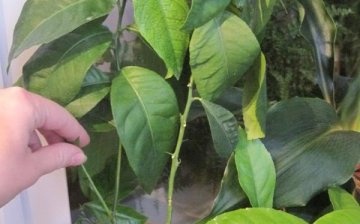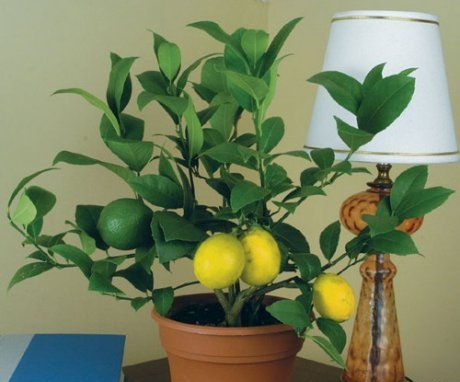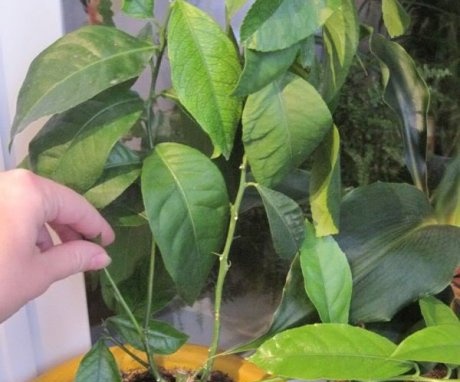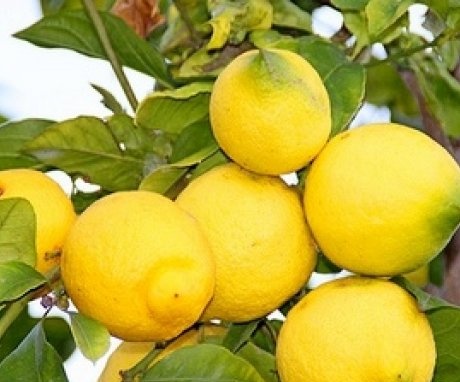How to plant lemon at home: rules and tips
Lemon is an evergreen subtropical plant that has long taken root in our homes. It is not difficult to grow a citrus tree at home. In addition to its beneficial properties, there is a sign that the sunny golden color of lemon attracts wealth and good luck.
Content:
- General description of indoor lemon
- How to properly plant lemon
- Indoor lemon care
- Useful properties of indoor lemon and its uses
General description of indoor lemon
The birthplace of this tree can be called India, China and the Pacific tropics. Lemon is not found in the wild. It is easy to cross, and many citrus hybrids are popular.
A lemon in indoor conditions can live for more than 30 years, and with age, the number of fruits only increases.
If you know how to plant lemon at home, then this business can be profitable. Homemade fruits are healthier than imported ones, since imported ones are picked not yet ripe.
Plant characteristic:
- In indoor conditions, this plant reaches a height of 1-2 m. It usually blooms 2 times a year, maybe 4, depending on the variety. In winter, with insufficient light, it rests.
- The flowers are white with five petals.
- The leaves are pointed.
- Fruits reach 6-9 cm in diameter, oval, yellow in color.
Compared to lemon bushes, grown outdoors, indoor lemons have thinner skin and fewer seeds. There is no particular difference in taste.
Despite the fact that you can buy lemons on the market all year round, many people prefer to grow it at home because of its invigorating citrus scent. It is believed that the smell of lemon is alarming, but this is not scientifically confirmed. Citrus growers say that they quickly get used to this smell and then it is difficult to imagine a house without a lemon scent.
There is a legend according to which one of the Caucasian kings imprisoned his servant for disfavor and ordered him to be fed only one type of food. Which one, the servant could choose for himself. And he chose lemons. When the guards asked why it was a lemon, he replied that their juice can quench thirst, that the beneficial properties of the peel and seeds support the work of the heart, the citrus aroma will cheer him up, and the pulp will serve as food. Now it is difficult to believe that a person is able to eat only lemons, but the legend is designed to show how useful and universal these fruits are.
How to properly plant lemon
If you want to grow a fruiting lemon, then growing from a seed is not a good option. Such a tree will bloom in 20 years. Specially grafted trees bear the greatest amount of fruits. Grafting is the transfer of part of one plant to another, after which they grow together.
There are several basic rules for grafting lemons:
- During vaccination, all manipulations must be carried out quickly and confidently. Too long waiting period will provoke tissue oxidation. Better to train in advance on other plants.
- Tools and hands should be thoroughly washed with soap.
- The cuts should be smooth, protruding "chips" and seizures are highly undesirable.
- The place for grafting on the rootstock and cuttings must be wiped with a damp, clean cloth.
- Purchase a tool in advance: soft tape, pruning shears, scalpel, plastic bottle or plastic bag.
- The graft (the part that will be grafted onto another plant - the stock) should not be cut off in advance. This is done just before the vaccination procedure.
- The best time to get vaccinated is summer or late spring.
The graft is a small twig with three leaves (the rest of the lower ones must be removed). The stock must be carefully cut, leaving 5-6 cm. It is better not to touch the slices with your hands. On the scion, two small cuts are made, an upper and a lower one. Then the scion and rootstock are connected, the tissues should be combined as tightly as possible. The vaccination site must be wrapped with tape, moving from top to bottom.
The leaves on the scion must either be cut off, but the petioles must be left, or simply cut.
The resulting plant is placed under a glass jar, a cut plastic bottle, or under a bag. Do not water, only spray. The grafted lemon should always be moist. For him, you need to create a kind of bath. You can spray the inside of a bag or bottle. Periodically, the lemon must be ventilated by removing the bag for a few minutes. If after 2 weeks the leaf petioles are easily detached from the stem, the grafting was successful.
The grafted plant should receive more light, but it should not be left in the sun. There is no need to fertilize and feed it earlier than after 3 months.
Indoor lemon care
Indoor lemons unpretentious in care, but that doesn't mean pouring tap water is all that is required. This plant has its own characteristics that must be considered if you want the shrub to bear fruit regularly.
Lemon, like any plant, loves light, but not direct sunlight. In winter, you can additionally illuminate it with artificial light sources, so that daylight hours have a duration of at least 10 hours.
Watering the plant:
- Dangerous as excess moisture in the soil, and its lack.
- If there is too much water, the roots begin to rot, and with prolonged drought, leaves fall off.
- You need to water the lemon when the top layer of soil in the pot has dried, but it should not dry out completely.
Air humidity should be over 60%.
In winter, when the batteries work at full capacity, the air in the room is dry, the humidity drops to 40%. If you have a humidifier that you use regularly, this is not a problem. But in the absence of such a lemon should be sprinkled with water.
Plant feeding:
- You need to feed with liquid fertilizers 2-3 times a month.
- Prepare fertilizer, like the soil for lemon, it is quite difficult for yourself, it is easier to buy ready-made in a specialized store.
- Before feeding, the plant must be watered so as not to burn the roots with fertilizer.
It is advisable to replant young plants every year. In adult lemons, it is sufficient to renew the topsoil. When transplanting, the lump around the rhizome is not destroyed.
For citrus fruits, clay pots are preferable to plastic ones. The pot should not be too large to prevent acidification of the soil.
Irrigation water must be free of chlorine.
This can be filtered water or settled melt water. No need to rearrange the plant from place to place. Lemons are sensitive to changes in lighting. It is better to immediately choose the most suitable place for it, protected from direct sunlight, and leave it there.
For good fruiting, it is important to correctly form the crown in the form of a bush. The plant is turned every few years.
Useful properties of indoor lemon and its uses
The use of lemon in cooking has long been known. Lemon juice is sprinkled on meat before cooking, added to salads, pie fillings, ice cream, cocktails. They even descale pots and kettles with it.Therefore, it is so beneficial to always have your own source of these citrus fruits on hand.
Lemons contain a variety of nutrients, including vitamins C, A, D, and B.
Beneficial features:
- Lemon juice strengthens the immune system, has a positive effect on the condition of the skin, hair, nails.
- You can rinse your hair with water with the addition of lemon juice. This will give them strength, shine, normalize the work of the sebaceous glands, and prevent dandruff.
- Lemon juice is famous for its bleaching properties. They have long been treated for freckles, acne, blackheads and age spots.
- Teeth are also whitened with lemon. For this, the peel and zest of lemon is applied to the surface of the teeth for a while. However, such home bleaching should not be overused. Large amounts of citric acid can damage the enamel.
- To strengthen and prevent brittle nails, make baths with lemon essential oil. Creams with the addition of lemon oil are used to combat cellulite.
To maintain health and strengthen immunity, especially in the cold season, it is useful to drink citrus water. It is very easy to prepare it. It is enough to take a container with a volume of 2 liters, lemon, orange and grapefruit. Wash everything well, cut into circles with a peel. Place the slices in a container, crush slightly so that the juice stands out. Put a few ice cubes on top, pour a small amount of purified water. Insist for about 12 hours. Diseases of the stomach, liver, intestines increase sensitivity to citric acid. In this case, use lemons carefully and avoid high concentration of juice.
More information can be found in the video.
















